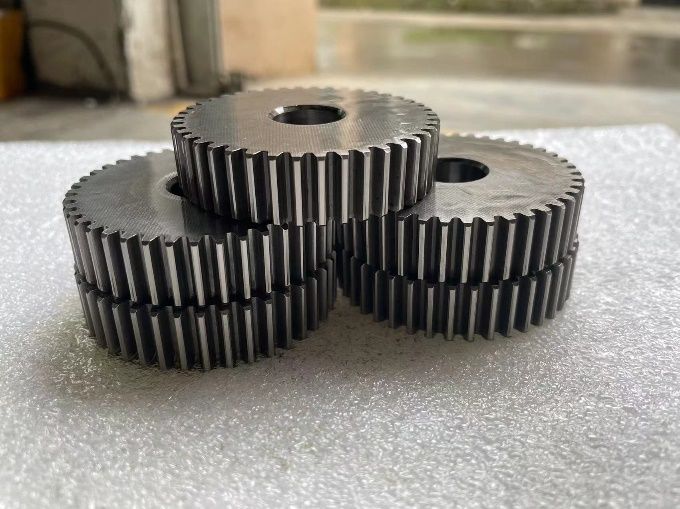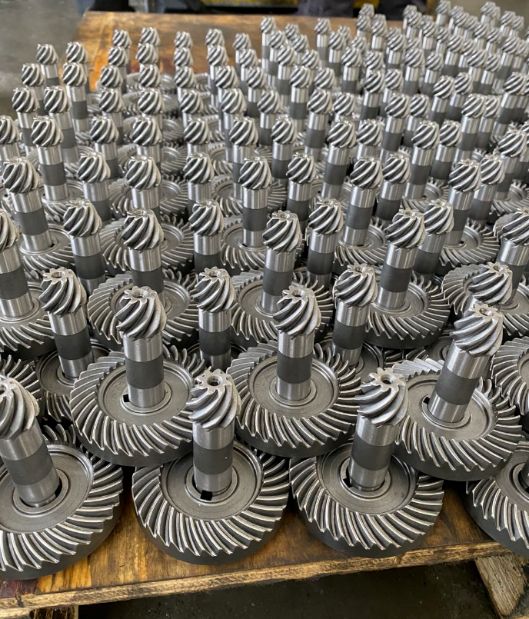Spur gears and bevel gears are both types of gears used to transmit rotational motion between shafts. However, they have distinct differences in their tooth arrangement and applications. Here’s a breakdown of their characteristics:
Tooth Arrangement:
Spur Gear: Spur gears have teeth that are parallel to the gear axis and extend radially from the center of the gear. The teeth are straight and are arranged in a cylindrical shape around the gear.
Bevel Gear: Bevel gears have teeth that are cut on a conical surface. The teeth are angled and form an intersection between the gear shaft and the gear surface. The orientation of the teeth allows the transmission of motion between intersecting shafts at an angle.
Gear Meshing:
Spur Gear: When two spur gears engage, their teeth mesh along a straight line, resulting in smooth and efficient power transmission. Spur gears are suitable for applications that require speed reduction or increase, but they are best suited for parallel shafts.
Bevel Gear: Bevel gears have teeth that mesh at an angle, allowing them to transmit motion between non-parallel intersecting shafts. They can change the direction of rotation, increase or decrease speed, or transmit motion at a specific angle.
Applications:
Spur Gear: Spur gears are commonly used in applications where the shafts are parallel, such as in machines, vehicles, and appliances. They are used for speed reduction or increase, power transmission, and torque conversion.
Bevel Gear: Bevel gears find applications where the shafts intersect at an angle, such as in differential drives, hand drills, gearboxes, and machinery that requires power transmission between non-parallel shafts.
Noise and Efficiency:
Spur Gear: Spur gears are known for their smooth and quiet operation, making them preferable in applications where noise reduction is important. They have high efficiency due to their straight teeth arrangement.
Bevel Gear: Bevel gears tend to produce more noise and experience slightly lower efficiency compared to spur gears due to the sliding action of their angled teeth. However, advancements in gear design and manufacturing have improved their efficiency and reduced noise levels.
It’s important to note that there are different types of bevel gears, such as straight bevel gears, spiral bevel gears, and hypoid gears, each with its own specific characteristics and applications.
Post time: May-17-2023






